Early life and career
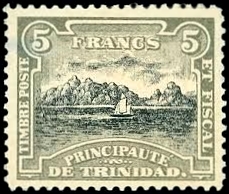
Wolfgang Baldus was born in 1954. [1] He works as a graphic designer and artist in Munich, Germany. [2]
Wolfgang Baldus | |
|---|---|
| Born | 1954 (age 65–66) |
| Nationality | German |
| Occupation | Graphic designer and artist |
| Known for | Philatelic writing |
| Website | www.wolfgang-baldus.de |
Wolfgang Baldus (born 1954) is a German graphic designer, artist, and philatelic writer. He is known for authoring and publishing books on cinderella stamps in the series History and Background Stories of Unusual Stamps and for his works on the philatelic forgeries and propaganda parodies produced by both sides during the First and Second World Wars.

Wolfgang Baldus was born in 1954. [1] He works as a graphic designer and artist in Munich, Germany. [2]
Baldus's first book was the two-volume Schwarze Post (1998), which dealt with the forged and propaganda stamps produced during the wars of the twentieth century. [3] It was later republished in an extended and revised edition as Postal Warfare: Espionage Forgeries and Propaganda Parodies of Postage Stamps, Postcards, and Letters. [4] In 2002 he produced Philatelic Witnesses: Stamps of Revolutions, one of only two of his works that were not self-published.[ citation needed ]

In 2003 he published The Postage Stamps of the Principality of Trinidad, the first in his series titled History and Background Stories of Unusual Stamps, which had reached nine volumes by 2012. Baldus is known for his meticulous approach, [6] in which he describes the background, production, and distribution of stamps produced by non-government entities, fraudsters, and fantasists, which are among the cinderella stamps of philately: often well known to collectors, but previously unresearched. The most recent book in the series is The Postage Stamps of the Principality of Atlantis (2012). [7]
In 2005 he continued the subject of espionage forgeries and propaganda parody stamps that he had begun with Schwarze Post by publishing German Propaganda Parodies against Great Britain that covers the topic of forgeries and propaganda stamps produced by prisoners of the Nazi regime at Sachsenhausen concentration camp during the Second World War. [3] Often the forged or parody stamps have been of so much interest to philatelists that they have themselves been forged to meet collector demand, and Baldus describes the different versions of the stamps, identifying the characteristics of the original forgeries or parodies and the later imitations. [6]

Also in 2005, he published OSS Hitler Stamps, A Philatelic Study on a Disputed Stamp Issue, a study of the stamps depicting Adolf Hitler that were produced by the United States Office of Strategic Services as part of Operation Cornflakes during the Second World War. [8] This operation included the forging of genuine German stamps as well as the creation of parody stamps such as one based on a genuine German 12pf stamp of 1941 that was changed to superimpose a skull over Hitler's face and with the wording changed from Deutsches Reich (German Empire) to Futsches Reich (broken or lost empire); the Americans hoped to insert the stamps into the German mail system in order to undermine civilian morale. [5] [9]
In 2006, he published The Postage Stamps of Clipperton Island, a postal history of Clipperton Island in the Pacific, and a description of the local stamps issued in San Francisco in 1895 by the Oceanic Phosphate Company that had a guano business there from 1893 to 1897. [10] [11]
In 2006, Baldus was invited to sign the Maurice Williams Roll of Notable Cinderella Philatelists. [12]
The publications of Wolfgang Baldus, all published by the author in Munich unless otherwise noted, are: [13]
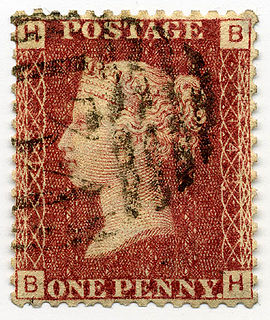
Philately is the study of postage stamps and postal history. It also refers to the collection, appreciation and research activities on stamps and other philatelic products. Philately involves more than just stamp collecting or the study of postage; it is possible to be a philatelist without owning any stamps. For instance, the stamps being studied may be very rare or reside only in museums.
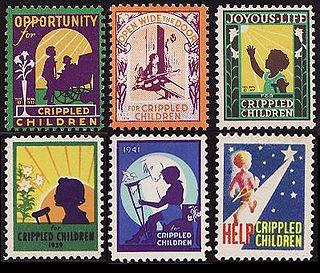
In philately, a cinderella stamp is "virtually anything resembling a postage stamp, but not issued for postal purposes by a government postal administration". The term excludes imprinted stamps on postal stationery.

Operation Cornflakes was a morale operation by the Office of Strategic Services during World War II that aimed to trick Deutsche Reichspost into inadvertently delivering anti-Nazi propaganda to German citizens through mail.

L.N. and M. Williams were a philatelic writing partnership made up of brothers Leon Norman Williams and Maurice Williams (1905–1976).

In general, philatelic fakes and forgeries are labels that look like postage stamps but have been produced to deceive or defraud. Learning to identify these can be a challenging branch of philately.

The Inverted Head Four Annas of India is a postage stamp prized by collectors. The 1854 first issues of India included a Four Annas value in red and blue. It was one of the world's first multicolored stamps; the Basel Dove preceded it by nine years. However, an invert error occurred during production, showing the head "upside down."
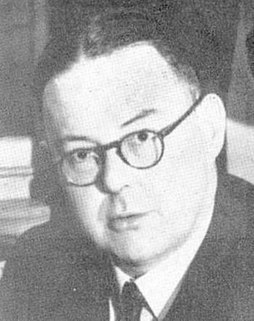
John Harry Robson Lowe, Robbie to his friends, was an English professional philatelist, stamp dealer and stamp auctioneer.

The postage stamps and postal history of Israel is a survey of the postage stamps issued by the state of Israel, and its postal history, since independence was proclaimed on May 14, 1948. The first postage stamps were issued two days later on May 16, 1948. Pre-1948 postal history is discussed in postage stamps and postal history of Palestine.

The postal history of Turkey and its predecessor state, the Ottoman Empire, dates to the 18th century when foreign countries maintained courier services through their consular offices in the Empire. Although delayed in the development of its own postal service, in 1863 the Ottoman Empire became the second independent country in Asia to issue adhesive postage stamps, and in 1875, it became a founding member of the General Postal Union, soon to become the Universal Postal Union. The Ottoman Empire became the Republic of Turkey in 1923, and in the following years, its postal service became more modernized and efficient and its postage stamps expertly designed and manufactured.
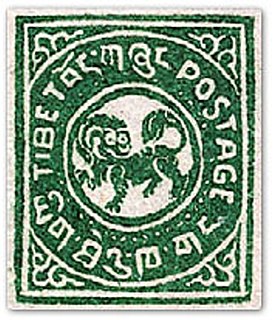
This is a survey of the postage stamps and postal history of Tibet.

Charles Nissen was a British philatelist, and stamp dealer who discovered the famous stock exchange forgery and wrote, with Bertram McGowan, the definitive book on the plating of the Penny Black.

The postal history of Monaco can be traced to the principality’s first postmark in 1704. Stampless covers are known with both manuscript and handstamp postmarks for Monaco and Fort d'Hercule ; as the principality was once much larger, postmarks of the communes of Menton and Roquebrune prior to their 1848 secession might also be included. Monaco used Sardinian stamps from 1851 until 1860, when by the Treaty of Turin, Sardinia ceded to France the surrounding county of Nice and relinquished its protectorate over Monaco; French stamps with Monaco or Monte-Carlo postmarks were used thereafter. Two forms of cancellation are known for the French period. With the first, the postmark is on the cover away from the stamps; an obliterator with an identifying post office number 4222, or later 2387, inside a diamond of ink dots cancelled the actual stamps. The second applied the postmark directly on the stamps, as both a date stamp and cancel. All of these postal forerunners, particularly usages of Sardinian stamps with Monaco cancels, are far more valuable than the same stamps postally used in the issuing countries.

Adrian Albert Jurgens was a South African philatelist and signatory to the Roll of Distinguished Philatelists of Southern Africa in 1948 and the Roll of Distinguished Philatelists in Great Britain in 1952.

A specimen stamp is a postage stamp or postal stationery indicium sent to postmasters and postal administrations so that they are able to identify valid stamps and to avoid forgeries. The usual method of invalidating the stamps is either overprinting in ink or perforating the word Specimen across the stamp and where English is not the common language, the words Muestra (Spanish), Monster (Dutch), Muster (German) or Образец have been used instead.
Béla Székula, also Bela Sekula (1881–1966), was a Hungarian philatelist, stamp dealer and forger who lived in Hungary, Switzerland and the USA.

Wolfgang C. Hellrigl was an expert on the philately of Nepal and Tibet who in 1994 was invited to sign the Roll of Distinguished Philatelists.

Edward Loines Pemberton was a pioneering philatelist and stamp dealer who was a leading advocate of the scientific school of philately and a founding member of The Philatelic Society, London, now The Royal Philatelic Society London. Pemberton was entered on the Roll of Distinguished Philatelists in 1921 as one of the fathers of philately. He was born in New York City but educated in Britain by relatives when his parents died shortly after his birth. His son, Percival Loines Pemberton (1875-1949) was also an eminent philatelist.

Dieter Bortfeldt FRPSL was a graphic designer and award-winning philatelist who was a specialist in the philately of Colombia. He designed the "Famous Colombians" and "Tourism" postage stamps of Colombia issued in 1993.

The first stamp of the Russian Empire was a postage stamp issued in 1857 and introduced within the territory of the Russian Empire in 1858. It was an imperforate 10-kopeck stamp depicting the coat of arms of Russia, and printed using typography in brown and blue.
Dragomir Zagorsky was a Bulgarian author and philatelist, described by Ivan Metchev as the "greatest expert and collector of Bulgaria of all time".